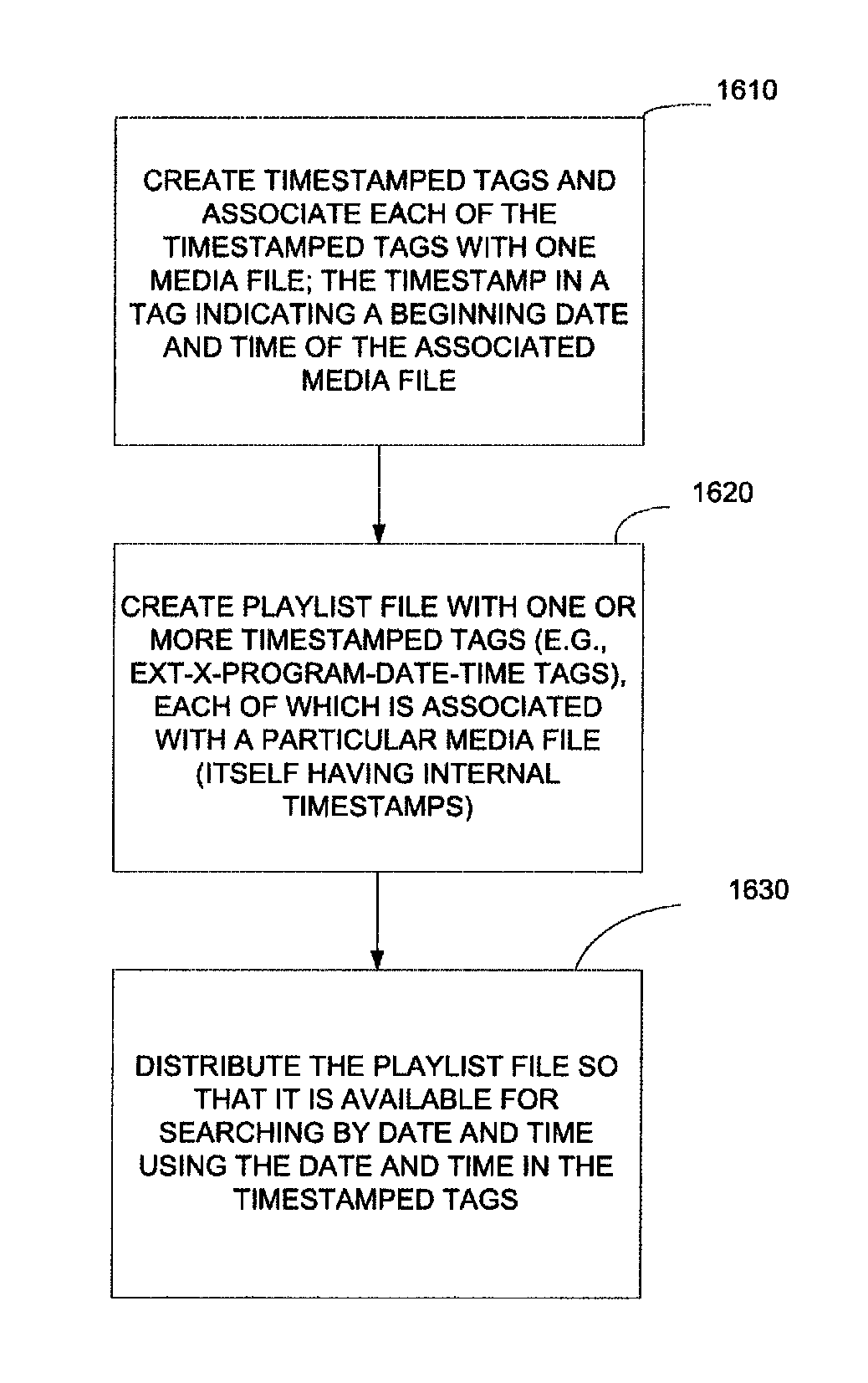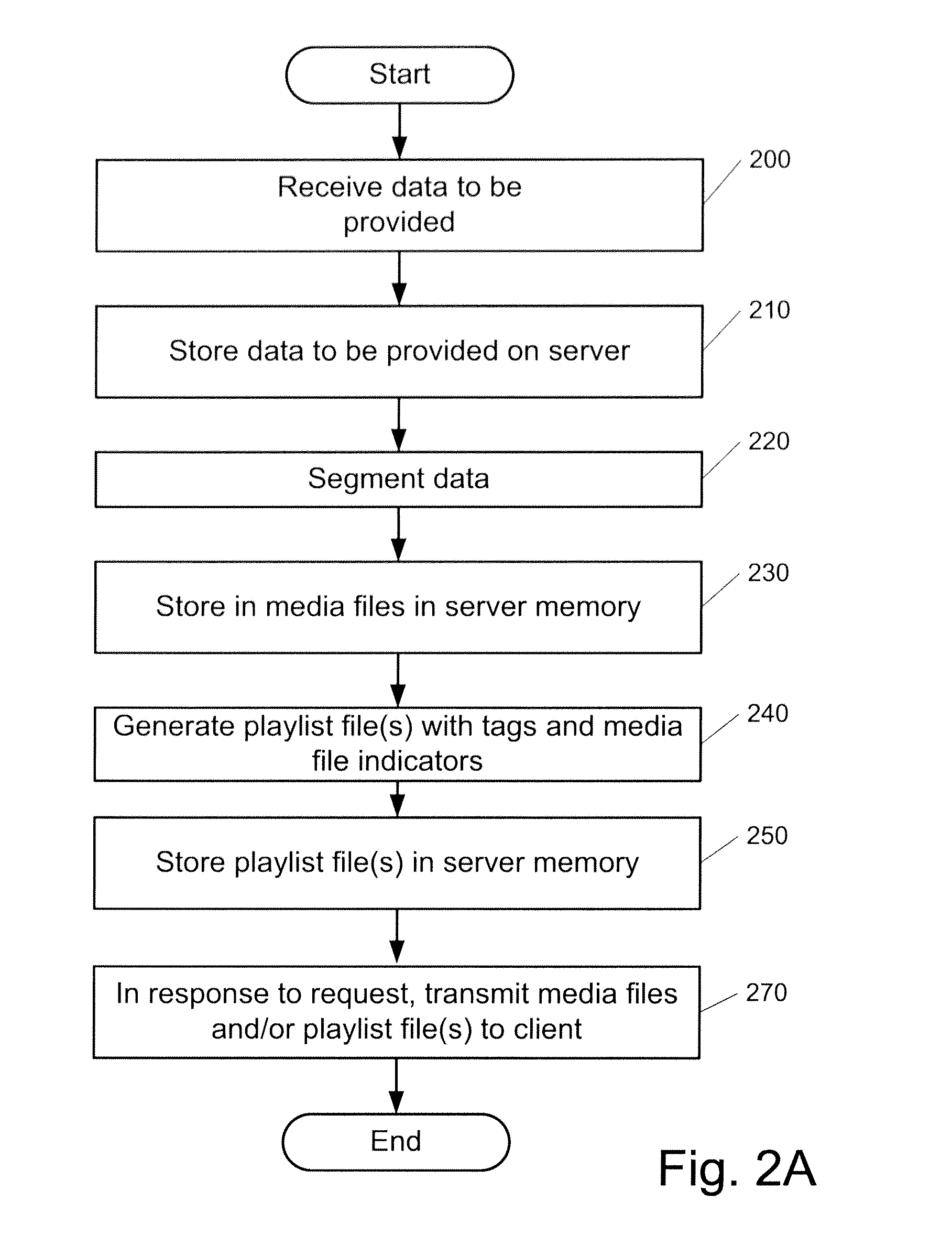[0019]In one embodiment described herein, playlists containing or specifying multiple media files can be created to ensure a certain minimum duration in time while allowing the multiple media files specified within the playlist to be shorter and perhaps even considerably shorter than the minimum duration of a playlist. For example, in one implementation of this embodiment, a method can set a target duration of a media file specified in a playlist as a maximum duration for each media the specified within the playlist and can then set or determine a minimum playlist duration as a multiple of the target duration. This can allow, in one implementation, the duration of each media file to be relatively short, such as a few seconds, while also ensuring that there is sufficient buffering occurring at a client device because the cumulative duration of the media files within the playlist satisfy a minimum, which can be based upon a multiple of a minimum or a maximum duration of each media file. A method according to this embodiment can also require a server to use a server timing model to transmit no earlier than an earliest time and no later than a latest time, wherein the earliest time and the latest time are based upon a time when an immediately previous playlist was first made available for transmission from a server. For example, in one embodiment the earliest time can be set as a time no earlier than one-half (or other multiple) of a target duration from when the previous playlist file was first made available for transmission, and the latest time can be set such that the server will transmit a new playlist file no later than one and a half times (or other multiple of) the target duration from when the immediately previous playlist file was first made available for transmission. The use of such earliest and latest times by a server, which is transmitting playlists, can allow a client device to implement an algorithm that reduces the amount of polling, by the client device, to discover playlist changes.
[0020]In another embodiment, a client device can adaptively determine an amount of overlap in time between two streams, such as two streams from two different playlists. For example, a client device can modify a minimum amount of overlap between the two streams based upon a connection speed or the type of connection. For example, a client device can request a first set of media files specified in a first playlist and can also request a second set of media files specified in the first playlist or another playlist, and the client device can store the content from both media files while presenting the content from the first set. The storage of both sets can create an overlap in time, such as the overlap shown in FIG. 9D and described below. The client device can set a minimum amount of overlap, which is required before switching, based upon the connection speed or connection type. For example, a higher connection speed, such as a 3G wireless cellular telephone connection (which is faster than a 2G wireless cellular telephone connection), may permit a smaller minimum overlap to be used while a slower connection speed may require a larger minimum overlap to be used. The client device can modify the minimum overlap based upon the connection speed or connection type and thereby adapt to the environment in which the client device is operating. After the client device establishes that a minimum amount of overlap exists, the client device can switch from one stream to the other stream as described further herein.
[0021]In yet another embodiment, a method described further herein can enforce a rule at a client device that requires playback to be started from a start point in a playlist file that is set to be at least a period of time before an end of the playlist file. For example, in one implementation, a start point for playback can be required to be at least several (e.g. three or five, etc.) target durations before the end of a playlist file. This can be desirable in order to prevent the client device from stalling during playback because no content is available to be displayed. This can be particularly advantageous when a client device is allowed to start playback at just before the last moments of a live streaming event; in this case, a client device may be viewing or otherwise presenting the last 10 or 20 seconds of a live event, and if a delay in the network or other distribution channel occurs, then the client device can run out of content to present. This problem can be reduced by enforcing the rule described herein which requires the playback point to begin from at least a certain period of time before the end of the playlist file. That period of time can be adjusted based upon expected network latency or other delays in order to attempt to avoid a stall in playback caused by a sudden lack of content that can be presented.
 Login to View More
Login to View More  Login to View More
Login to View More 


